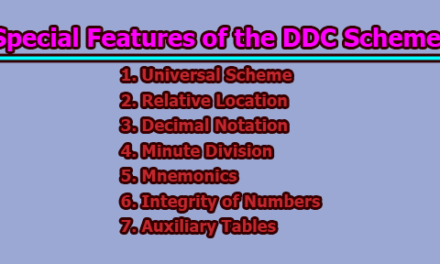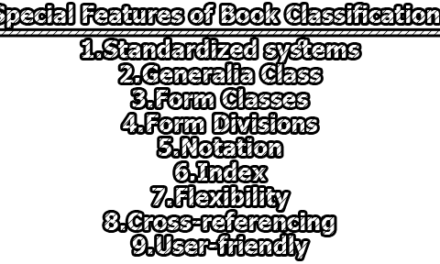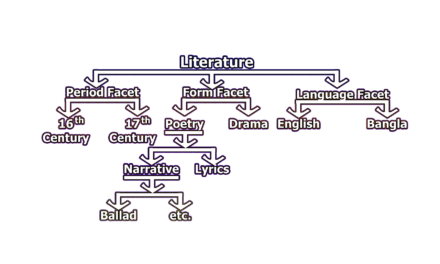Knowledge classification is outlining and mapping to depict the structure and boundaries of knowledge. It leads to a better understanding of its history, nature, kinds, properties, growth, and also gaps. Thus knowledge grows by its own classification. It becomes a guide for educationists, scientists, and librarians. Knowledge classification is both speculative and empirical and is a province of philosophers and scholars. From time to time philosophers, scientists, educationists, and the likes have formally categorized entire known knowledge to outline its boundaries and show the structure of knowledge.
Definition of Knowledge classification: some of the necessary definitions of knowledge classification are being;
“Knowledge classification used as a formative way and is thus useful during the preliminary stages of inquiry as a heuristic tool in discovery, analysis, and theorizing then it’s used as a rich representation of what is known and is thus useful in communication and in generating a fresh cycle of exploration, comparison, and theorizing.” (Davies & Kaplan)
Knowledge classification is used for any branch of knowledge, but which cannot be adapted for classifying books until a generalia class, form classes and divisions, a notation, and an index have been added.
Knowledge classification refers to the systematic arrangement of knowledge materials by subject matter so that subject-related materials may be brought together.
From the above definitions, we can say that Knowledge classification is the discipline that exists in university departments, school subjects, and other intuitional documents which help to find out specified information in a stress-free way.
Different opinions of philosophers about knowledge classification:
The philosophers were greatly interested in studying the mutual relations between ideas and also the sequence of ideas. This leads to a large number of schemes of knowledge classification. These were mainly prepared for their mental satisfaction, without keeping in view their application for the arrangement of documents in a helpful sequence to serve the requirements of the users. Some of the leading philosopher’s schemes are being with brief descriptions:
1) Vedic Classification: The earliest of the known schemes of knowledge classification is the Vedic one. This scheme is implied in the Upanishads. It is divided into the universe of ideas into four groups, called Dharma, Artha, Karma, and Moksha. The sequence of these groups corresponds to the four different stages through which an individual or a society passes. Thus Vedic classification is socio-centered. Dharma is supposed to include those subjects which are concerned with the maintenance of human society as an organization. These subjects correspond to modern subjects of law, theology, ethics, and sociology.
Artha includes those subjects which are concerned with social well-being. These subjects correspond to the modern subjects of history, political science, economics, and the applied sciences.
Karma idea is also commonly implemented in Western popular culture, in which the events which happen after a person’s actions may be considered natural consequences.
Moksha includes those subjects which involve individualism par excellence. These subjects are necessary. So, that subjects in other groups can be enriched and raised to a higher level, whereby they are able to meet social requirements this is why Moksha includes subjects such as philosophy.
2) Greek Classification: is said to have developed from the time of Plato. Plato’s scheme constituted logic, physics, and ethics. However, the scheme of knowledge classification put forward by Aristotle is regarded as a representative of the Greek schemes. He divided knowledge into three groups, such as; theoretical philosophy, practical philosophy, and productive arts. The first aimed at knowledge for its own sake. The second aimed at knowledge as a guide to conduct, and the third aimed at knowledge used to make useful or beautiful subjects.
The subjects included in theoretical philosophy are logic, metaphysics, mathematics, and physics. Practical philosophy covered ethics, political science, and economics. Productive arts consisted of applied science including useful arts. This grouping shows that this scheme was utility-centered.
3) Scholastic Classification of Medieval Europe: is said to have taken shape after Greek classification. Scholastic classification is the scheme of knowledge classification based upon the practices and traditions prevailing in the Medieval Universities of Europe. This scheme was thus university-centered.
This scheme divided the universe of ideas into three groups mainly, trivium, quadrivium, and the third group. In trivium, the dominant subjects were linguistics, dialects, and rhetoric. The dominant subjects in quadrivium were arithmetic, geometry, astronomy, and music. And the third group was theology, metaphysics, and ethics.
4) Baconian Classification: Francis Bacon (1561-1626), examined the universe of ideas as it excited at that time. On the basis of his study, he produced a new scheme of knowledge classification. This scheme appeared in his “Advancement of Knowledge” (1605) and is considered to be psychology-canters. It seems trivium and quadrivium influenced Bacon, but the influence is not apparent.
In his scheme, he divided the universe into three groups, namely; history (emanation from memory), poesy (emanation from imagination), and philosophy (emanation from reason).
In history, the dominant subjects were geography and history. The dominant subjects included in poesy were fine arts and literature, philosophy included the rest of the subjects.
Bacon’s classification influenced directly or indirectly the later schemes over a lanes period of time.
5) Kant’s Classification: Immanuel Kant (1774-1804) in his “Critique of Pure Reason” (1781) has described his dichotomic scheme of knowledge classification. This is based on the approach that a given universe of entities can always be divided into two groups on the basis of primitive human instinct. According to the instinct, we can say about any things that either, “this is A” or “this is not A”.
6) Hegel’s Classification: Genoese Wilhelm Friedrich Hegel (1770-1831), described the triadic scheme of knowledge classification in his “Logic” (1832). This scheme seems to have been influenced by the Greek trial. The scheme is given as follows;
7) Hobbes’s Classification: Thomas Hobbes (1585-1679), described his scheme of knowledge classification is his “Leviathan” (1651). He divided knowledge into the following two groups:
- Mechanics, engineering, architecture, navigation, and
- Acoustics, music.
Each successive step should include either two or only two subdivisions (dictionary) or three and only three subdivisions (triad).
8) Comet’s Classification: Auguste Comet (1798-1857), put his serial system of knowledge in his “Course Philosophies Positive” (1830). He arranged the subjects in the sequence of mathematics, astronomy, physics, chemistry, biology, and social physics, Comet claimed that in this sequence, each subject is virtually an application of the preceding one. Such a system of knowledge classification has been referred to as a serial classification.
9) Ampere’s Classification: Andre Merle Ampere (1775-1836), worked out his system of serial classification in his “Essaigur Philosophe” as given below; Physics, engineering, geology, mining, botany, agriculture, zoology, animal husbandry, medicine. Ampere’s system was more through those previous systems.
10) Spencer’s Classification: Herbert Spencer (1820-1903), formulated another serial scheme, which was described in his “Classification Sciences” (1864). His sequence of subjects is given below; logic, mathematics, physics, chemistry, astronomy, geology, biology, phycology, and sociology.
It is apparent that the early philosophers were the first to study the problems of classification of knowledge and then make an attempt to provide a philosophical system of knowledge of its own.

Former Student at Rajshahi University










